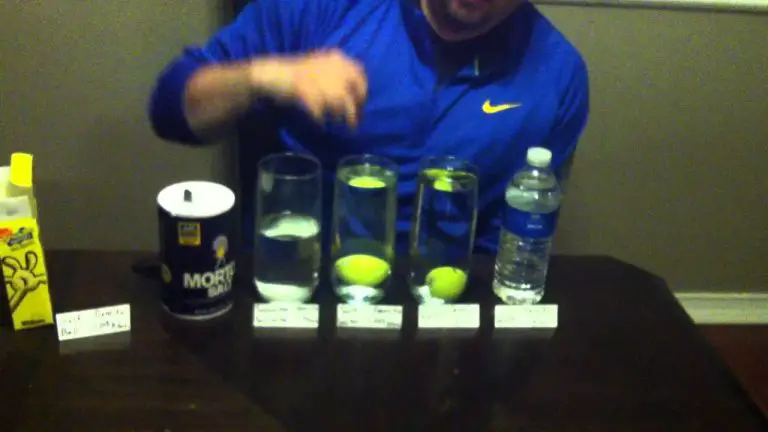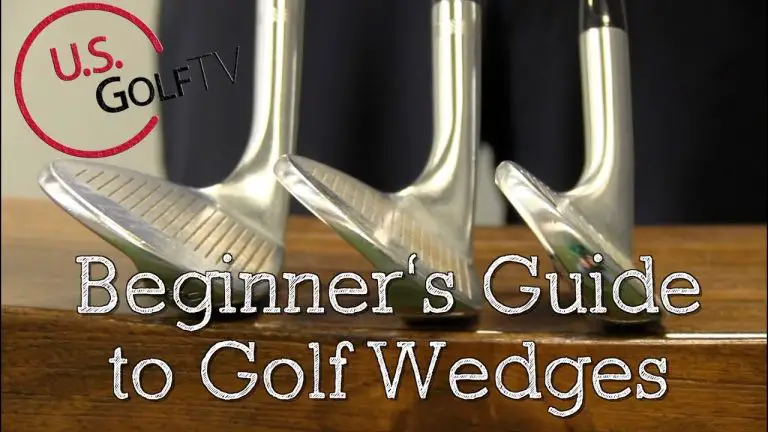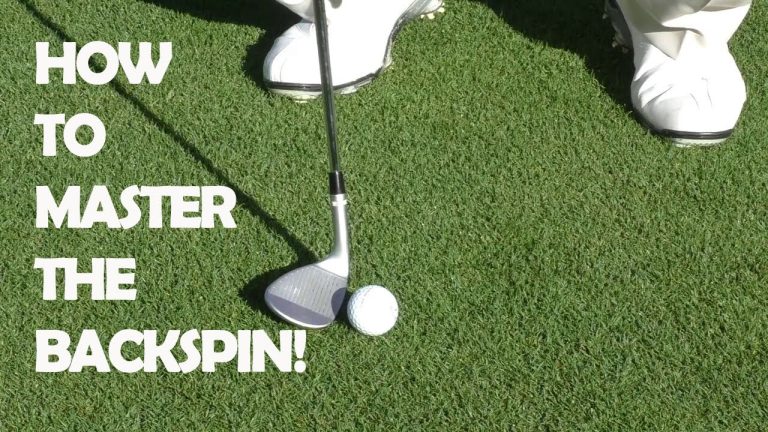How Long Do Golf Grips Take To Dry
Golf grips are the unsung heroes of a golfer’s game, providing the crucial connection between their hands and the club. To maintain optimal performance and durability, it is essential to keep golf grips in top condition. One aspect that often raises questions among golfers is the drying time of their grips. How long does it actually take for golf grips to dry?
Properly drying golf grips is vital after cleaning or in wet conditions. Damp or wet grips can compromise shot accuracy, control, and overall performance on the course. Additionally, neglecting to dry grips thoroughly can lead to degradation and a shorter lifespan.
The drying time of golf grips depends on various factors, including the material composition of the grips, environmental conditions, and grip thickness. Understanding these factors can help golfers make informed decisions and take appropriate steps to ensure efficient drying.
In this comprehensive guide, we will explore the factors affecting golf grip drying time, delve into the average drying times, and provide practical tips to expedite the drying process. By the end, you will have a thorough understanding of how to effectively dry your golf grips, ensuring optimal performance and longevity for your game.

Understanding Golf Grips
Before we dive into the drying time of golf grips, let’s start by understanding what golf grips are and why they are vital for a golfer’s game. Golf grips are the rubber, synthetic, or leather coverings placed on the handles of golf clubs. They provide golfers with the necessary grip and control to execute accurate shots. Properly maintained grips ensure a secure connection between the golfer’s hands and the club, allowing for optimal swing performance.
To maintain the best grip conditions, it is important to be aware of factors that can affect the performance and durability of golf grips. Factors such as grip material, environmental conditions, and grip thickness all play a role in the drying time of golf grips.
Importance of Drying Golf Grips
Drying golf grips is crucial for several reasons. Firstly, damp or wet grips can significantly impact shot accuracy and control. When grips are moist, they become slippery, making it challenging to maintain a firm hold on the club. This can result in mishits, inconsistent shots, and reduced overall performance on the golf course.
Furthermore, failing to dry golf grips properly can lead to grip degradation and a shortened lifespan. Excessive moisture can cause the grips to deteriorate, lose their shape, or develop mold and mildew. By ensuring that golf grips are thoroughly dried, golfers can extend the lifespan of their grips and avoid unnecessary replacements.
Now that we understand the importance of drying golf grips, let’s explore the factors that influence their drying time.
Factors Affecting Golf Grip Drying Time
Several factors come into play when determining the drying time of golf grips. Understanding these factors can help golfers make informed decisions and take appropriate steps to ensure their grips dry efficiently.
Material Composition
The material composition of golf grips significantly affects their drying characteristics. Golf grips are commonly made of rubber, synthetic materials, or leather. Each material has different properties when it comes to moisture absorption and release.
Rubber grips, for example, are often more resistant to moisture and can dry relatively quickly. Synthetic grips, on the other hand, may have varying levels of moisture absorbency depending on their specific composition. Leather grips, while providing a luxurious feel, may require more attention and care during the drying process due to their natural characteristics.
Understanding the material composition of your golf grips will give you insight into their drying behavior and help you determine the most suitable drying methods and timeframes.
Environmental Conditions
The surrounding environment, particularly temperature and humidity levels, plays a significant role in the drying time of golf grips. Warmer temperatures and lower humidity levels generally promote faster evaporation, resulting in shorter drying times.
If you live in a hot and dry climate, your golf grips may dry more quickly compared to someone residing in a cooler and more humid region. It’s important to consider the prevailing environmental conditions when estimating the drying time of your golf grips.
To optimize the drying process, it is recommended to dry golf grips in a well-ventilated area with moderate temperature and humidity levels. Avoid exposing the grips to extreme heat or direct sunlight, as this can potentially damage the material.
Grip Thickness
The thickness of a golf grip can also influence its drying time. Thicker grips generally retain more moisture and take longer to dry compared to thinner grips. This is because thicker grips have a larger surface area and more material to absorb and release moisture.
When considering grip thickness, it’s important to find a balance that suits your personal preference and playing style. Thicker grips can provide a softer feel and increased shock absorption, while thinner grips offer more feedback and control. However, keep in mind that thicker grips may require a longer drying time after being exposed to moisture.
It’s worth noting that grip thickness can also vary among different manufacturers and grip models. Therefore, it’s a good idea to familiarize yourself with the specific grip thickness options available and their potential impact on drying time.
Now that we have explored the factors that affect golf grip drying time, let’s move on to understanding the average drying time for golf grips and various methods to expedite the drying process.
Average Drying Time for Golf Grips
While the exact drying time for golf grips can vary depending on the factors mentioned earlier, we can provide some general guidelines and estimated timeframes. Keep in mind that these timeframes are approximate and can be influenced by the specific circumstances surrounding your golf grips.
Drying Methods and Timeframes
- Air Drying: Air drying is a common and effective method for drying golf grips. After cleaning or when the grips are damp, you can simply leave them in a well-ventilated area at room temperature. The drying time can range from a few hours to overnight, depending on the grip material, environmental conditions, and grip thickness.During air drying, it’s important to ensure that the grips are exposed to adequate airflow. You can place the clubs in an upright position, allowing air to circulate around the grips evenly. Remember to avoid stacking clubs or placing them in a closed container, as this can impede the drying process.
- Towel Drying: Towel drying is another method to expedite the drying time of golf grips. After cleaning or when the grips are wet, gently pat them with a clean and absorbent towel to remove excess moisture. This process can help to accelerate the evaporation process.The time required for towel-drying golf grips can vary depending on the amount of moisture present and the absorbency of the towel. On average, towel drying can take anywhere from 30 minutes to a few hours. Ensure that you thoroughly dry all areas of the grip, including the grip surface and the areas beneath your hands.
- Other Drying Techniques: In addition to air drying and towel drying, there are alternative methods that can be used to expedite the drying time of golf grips.a. Grip Drying Solution: Some golfers opt to use grip drying solutions or sprays specifically designed to accelerate the drying process. These solutions often contain alcohol or other drying agents that aid in moisture evaporation. Follow the instructions provided by the manufacturer for optimal results.b. Heat Sources: Care must be taken when using heat sources such as hairdryers or heat guns to dry golf grips. While heat can speed up the drying process, excessive heat can potentially damage the grip material. If using heat, maintain a safe distance, and use a low heat setting to avoid overheating the grips.
It’s important to note that the drying time for golf grips is not an exact science and can vary based on individual circumstances. The methods mentioned above provide general guidelines, but it’s always recommended to monitor the grips during the drying process and adjust accordingly.
Tips for Accelerating Grip Drying Time
If you’re looking to speed up the drying time of your golf grips, here are some practical tips and strategies to consider:
Proper Cleaning and Maintenance
Regularly cleaning your golf grips is essential for optimal performance and durability. When grips accumulate dirt, sweat, or debris, they become more prone to moisture retention. By keeping your grips clean, you can minimize the time required for them to dry. Here are some tips for proper cleaning and maintenance:
- Regular Cleaning: Clean your golf grips regularly to prevent the buildup of dirt and oils. Use a mild soap or grip-specific cleaning solution along with a soft brush or cloth to gently scrub the grips. Rinse them thoroughly with water and pat them dry before allowing them to air dry.
- Avoid Excessive Moisture: Minimize the exposure of your golf grips to excessive moisture. After playing in wet conditions, promptly wipe off any water or raindrops from the grips using a towel. This will help reduce the overall moisture content and accelerate the drying process.
- Avoid Harsh Chemicals: When cleaning your golf grips, avoid using harsh chemicals or solvents that can potentially damage the grip material. Stick to mild soap or grip-specific cleaning solutions recommended by the manufacturer.
Quick-Drying Solutions
If you’re in a hurry or need your golf grips to dry faster, there are quick-drying solutions available in the market. These products are designed to accelerate the evaporation process and reduce drying time. Here are a few options to consider:
- Grip Drying Sprays: Grip drying sprays typically contain alcohol or other drying agents that facilitate moisture evaporation. Apply the spray according to the manufacturer’s instructions, ensuring even coverage on the grip surface. These sprays can help expedite the drying time, but be cautious not to oversaturate the grips.
- Drying Bags or Cases: Some manufacturers offer specialized drying bags or cases that promote airflow and facilitate faster drying. These products often have built-in ventilation or moisture-wicking properties, allowing the grips to dry more efficiently. Consider investing in such products if you frequently encounter wet or humid playing conditions.
Backup Grips
Having spare grips can be advantageous when it comes to minimizing downtime and waiting for grips to dry. By having backup grips readily available, you can quickly replace damp or wet grips with dry ones and continue playing without significant interruption. This approach is particularly useful for golfers who regularly play in wet or rainy climates.
Remember to properly store backup grips in a dry and cool environment to maintain their condition and prevent moisture accumulation.
Conclusion
Understanding the drying time of golf grips is essential for maintaining their performance and longevity. Factors such as material composition, environmental conditions, and grip thickness all play a role in determining the drying time. By following proper cleaning and maintenance practices, utilizing quick-drying solutions when needed, and considering backup grips, you can optimize the drying process and ensure your golf grips are ready for your next round.
Take the time to assess the specific attributes of your golf grips, such as their material, thickness, and surrounding environment, to get a better understanding of how long they might take to dry. Experiment with different drying methods and techniques to find the approach that works best for you. With proper care and attention, you can enjoy consistently dry and reliable golf grips that enhance your game.





